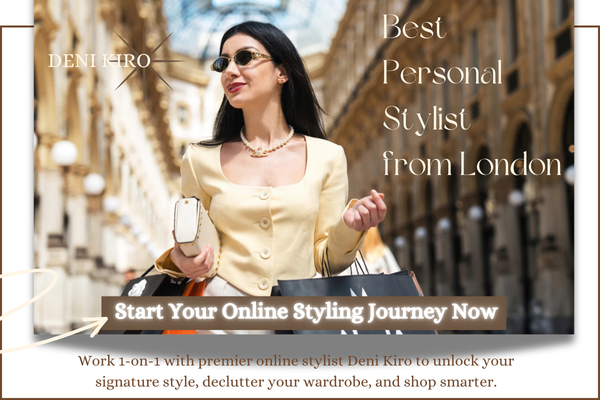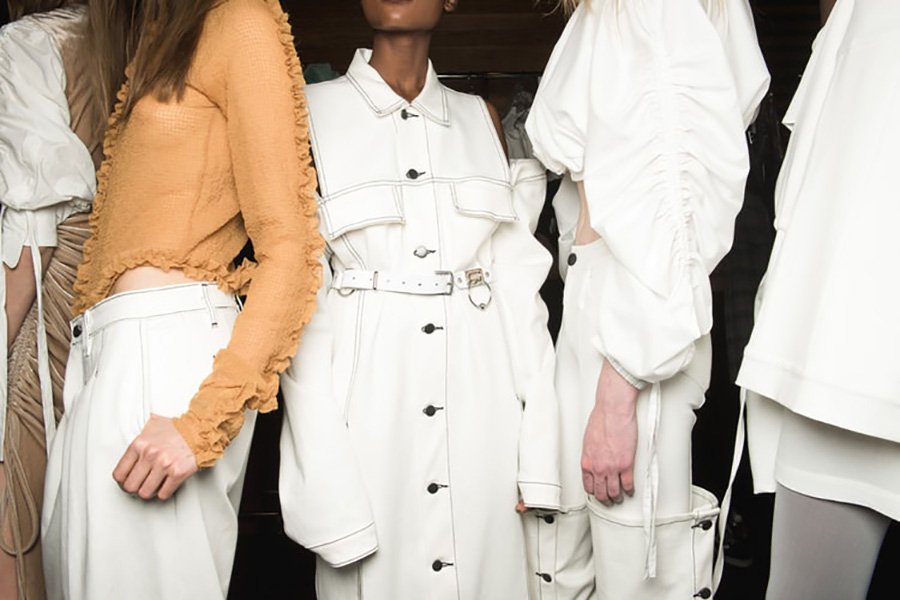Have you ever wondered why you feel more confident in certain outfits? Or have you noticed how colleagues respond differently when you wear particular colours? It’s not just in your head—it’s the fascinating world of colour psychology at work.
As a personal stylist with over a decade of experience working with professionals across industries, I’ve witnessed firsthand how the right colour choices can transform both appearances and outcomes in the workplace.
The psychology of colour extends far beyond aesthetic preferences—it’s a powerful communication tool that influences perception, behaviour, and even decision-making in professional environments.
The Silent Language of Colour in Professional Settings
Colour speaks before you do. When you walk into a meeting, your colour choices communicate subtle messages about your personality, confidence level, and professional intentions.
This silent language can either strengthen or undermine the verbal message you’re trying to convey.
Research from the Psychology Institute shows that people make subconscious judgments about a person, environment, or product within 90 seconds of initial viewing—and between 62% and 90% of that assessment is based on colour alone. That’s an astonishing influence that most professionals aren’t consciously harnessing.
Consider this: when former UK Prime Minister Margaret Thatcher wanted to signal strength and authority, her wardrobe shifted dramatically toward navy blue suits. This wasn’t coincidental—it was strategic colour psychology in action.
https://www.politico.eu/cdn-cgi/image/width=1160,height=776,fit=crop,quality=80,onerror=redirect,format=auto/wp-content/uploads/2016/06/GettyImages-166047545.jpg
“Choosing your professional wardrobe colours with intention isn’t about manipulation—it’s about alignment. When your visual presentation aligns with your professional goals and authentic self, you create harmony that others respond to positively.” – Deni Kiro
Beyond Black and Blue: The Spectrum of Professional Perception
While traditional corporate environments have historically favoured dark neutrals like navy, charcoal, and black, the professional colour landscape has evolved significantly. Today’s workplace offers more room for strategic colour expression.
Each colour in your professional wardrobe carries specific psychological associations:
- Navy Blue: Communicates authority, trustworthiness, and dependability
- Charcoal Grey: Projects sophistication, practicality, and neutrality
- Black: Signals power, prestige, and formality (but can sometimes appear intimidating)
- Burgundy: Conveys confidence and thoughtfulness without domination
- Forest Green: Suggests stability, growth, and balance
- Royal Purple: Associates with creativity alongside executive presence
During a recent Style DNA consultation with a financial services executive, we discovered that her predominantly black wardrobe created an unintended barrier between her and her team. By introducing strategic touches of burgundy and teal—colours that maintained her authority while appearing more approachable—she reported a notable improvement in team communication within just weeks.
Your Biological Colour Blueprint
The most powerful colour strategy goes beyond trend forecasts or industry norms—it acknowledges your unique biological colour blueprint.
Your skin tone, hair colour, and eye colour create a natural palette that specific clothing colours will either enhance or diminish.
This isn’t merely about aesthetics—it’s about optimising your professional presence. When you wear colours that harmonise with your natural features, you appear:
- More vibrant and healthy
- More confident and present
- Less tired or washed out
- More authentic and trustworthy
During professional colour analysis sessions with clients, I frequently hear the same revelation: “I’ve always avoided this colour because I thought it wasn’t professional enough, but it actually makes me look more polished and put-together than my usual neutrals!”
Discovering Your Colour Season
Professional colour analysis typically categorises individuals into four seasonal palettes:
Winter palettes suit individuals with high-contrast features—often dark hair with fair or deep skin tones. Their optimal professional colours include pure white, true black, clear bright colours, and jewel tones. CEO client Amina discovered that replacing her beige suits with sapphire blue and crisp white dramatically increased her perceived executive presence.
Summer palettes complement those with soft, cool undertones—typically ash blonde or brown hair with blue or grey eyes. Their professional wardrobe thrives with soft navy, rose brown, powder blue, and mauve. Marketing director Sarah found that switching from stark black to softer navy blues elevated her presentation impact.
Autumn palettes enhance those with warm, golden undertones—often red, auburn, or warm brown hair. Their professional palette includes camel, olive green, burnt orange, and terracotta. Financial advisor James noticed client engagement improved after incorporating warm cognac and forest green items into his previously all-grey wardrobe.
Spring palettes benefit those with warm, light features—typically golden blonde or light brown hair with clear eyes. Their professional wardrobe shines with bright navy, coral, aqua, and warm yellows. Technology entrepreneur Lisa found her pitch presentations more memorable when she incorporated strategic touches of coral against neutral foundations.
The Strategic Colour Framework for Professional Advancement
Beyond understanding your personal colour harmony, strategic colour usage requires awareness of situational context. Here’s a practical framework for leveraging colour psychology across different professional scenarios:
For High-Stakes Negotiations
When preparing clients for critical negotiations, I recommend a technique called “colour anchoring.” This involves establishing a signature colour that creates recognisable consistency while strategically varying secondary colours based on the specific negotiation goals:
- When seeking compromise: Anchor in navy (trustworthiness) with accents of green (balance)
- When establishing authority: Anchor in charcoal with accents of burgundy (controlled power)
- When pursuing innovation: Anchor in navy with strategic touches of purple (creative leadership)
One finance director client used this technique during a series of challenging acquisition negotiations, maintaining his navy suit as an anchor while varying his tie and pocket square colours based on each meeting’s specific objectives. The subtle psychological influence contributed to successful outcomes across multiple negotiation stages.
For Public Speaking Engagements
Colour becomes particularly influential when you’re the focal point. The strategic use of colour contrast creates visual authority and enhances audience retention:
- Against light backgrounds, medium-to-dark colours create the necessary definition
- Against dark backgrounds, clear colours with adequate brightness ensure visibility
- For extended presentations, colours with appropriate intensity prevent visual fatigue
Creating Your Colour Advantage: Strategic Wardrobe Building
Let’s translate colour psychology into practical wardrobe strategies you can implement immediately.
The 60-30-10 Colour Rule for Professional Impact
The most effective professional wardrobes follow what we can call the “60-30-10 colour distribution” principle:
- 60% Base colours aligned with your industry’s expectations and your colour season
- 30% Complementary colours that enhance your personal features
- 10% Strategic accent colours that distinguish you professionally
This balanced approach ensures you appear appropriately professional while creating a subtle distinction that enhances memorability.
When styling investment banker James, we applied this principle by building a wardrobe with 60% refined navy and grey (industry-appropriate base), 30% burgundy and deep teal (complementary to his autumn colouring), and 10% strategic accents in burnt orange (his distinction colour). Within weeks, he reported clients specifically mentioning his “polished presentation” in feedback.
Emotional Colour Psychology: The Confidence Connection
Have you ever put on a particular colour and instantly felt more capable? There’s compelling science behind this experience.
A fascinating study in the Journal of Experimental Social Psychology found that wearing specific colours can trigger associated psychological states—what researchers call “enclothed cognition.”
Participants performed better on attention-based tasks when wearing colours they associated with competence and focus.
This is why I always include a “confidence colour assessment” during client consultations. By identifying which colours create your personal confidence response, we can strategically incorporate them into high-stakes professional scenarios.
For tech executive Sarah, her confidence colour was a specific shade of cobalt blue—not coincidentally, the same blue that perfectly complemented her winter colouring. We strategically incorporated this shade into her interview wardrobe through a structured blazer, resulting in what she described as “the most confident interview performance of my career.”
The Four-Part Colour Framework for Professional Advancement
Based on over a decade of styling professionals across sectors, I’ve developed this practical framework for using colour to support career progression:
- Foundation Colours: 3-4 industry-appropriate neutrals aligned with your colour season
- Connection Colours: 2-3 approachable colours that facilitate relationship-building
- Authority Colours: 1-2 high-impact colours reserved for leadership moments
- Signature Colour: Your unique identifier that enhances professional memorability
Marketing Director Amelia applied this framework when transitioning to a senior leadership role. Her colour strategy included:
- Foundation: Navy, charcoal, and soft grey (appropriate for her corporate environment)
- Connection: Sage green and dusty rose (flattering to her summer colouring)
- Authority: Deep burgundy (reserved for presentations and board meetings)
- Signature: A specific shade of periwinkle blue as her “calling card” colour
Six months after implementing this strategy, she shared that colleagues and clients could “spot her across conference venues” and that her presentation feedback consistently mentioned her “commanding presence.”
Colour Psychology Across Professional Contexts
Different professional environments have distinct colour expectations and opportunities.
Traditional corporate settings often have unspoken colour codes. Rather than viewing these as limitations, consider them frameworks within which strategic colour choices create an advantage.
In corporate environments, I recommend the “neutral plus one” approach:
- Build a foundation of industry-appropriate neutrals
- Add one carefully selected colour that both complements your natural features and communicates your intended professional attribute.
Banking executive Michael implemented this strategy by maintaining his foundation of charcoal and navy suits while incorporating ties and pocket squares in a specific shade of emerald green—a colour that both flattered his autumn colouring and conveyed the reliability and growth orientation he wanted to project.
Creative Industries: Colour as Professional Currency
In creative fields, colour knowledge itself becomes professional currency. Understanding colour psychology demonstrates your visual literacy and strategic thinking.
For creative professionals, I recommend:
- More adventurous colour combinations that showcase visual sophistication
- Strategic use of emerging colour trends to demonstrate industry awareness
- Unexpected colour pairings that reflect creative confidence
Client-Facing Roles: Adaptive Colour Strategy
For professionals who interact with diverse client bases, I recommend developing what I call “colour agility”—the ability to strategically adjust colour choices based on specific client contexts.
Financial advisor Robert maintains three distinct colour approaches for different client segments:
- Traditional clients: Navy and burgundy palette conveying established reliability
- Tech industry clients: Charcoal with strategic touches of teal signalling innovative tradition
- Creative industry clients: Textured blues with unexpected colour accents demonstrating creative understanding
This adaptive approach has measurably improved his client acquisition and retention rates across diverse sectors.
Practical Colour Implementation: Your Next Steps
Ready to harness the power of colour psychology in your professional wardrobe? Here’s a practical pathway to get started:
- Identify your colour season – Determine whether you’re a Winter, Spring, Summer or Autumn to understand which colours naturally enhance your appearance
- Audit your current wardrobe – Evaluate which items align with your optimal colour palette and identify gaps
- Create your strategic colour framework – Establish your foundation, connection, authority and signature colours
- Implement incrementally – Begin with simple additions that complement your existing wardrobe
When clients feel overwhelmed by colour psychology possibilities, I remind them that even small, strategic colour adjustments can yield significant professional benefits. You don’t need to overhaul your entire wardrobe—you need to make thoughtful, intentional choices.
Turn Colour Psychology into Your Professional Advantage
Understanding the psychology of colour gives you access to a powerful professional tool that most people use unconsciously, if at all. By making intentional, strategic colour choices, you can influence how you’re perceived while enhancing your natural confidence.
Are you ready to transform your professional presence through strategic colour psychology? Through my Style DNA service, I provide comprehensive colour analysis personalised to your professional context, natural features, and career objectives.
For professionals seeking immediate colour guidance, my One-To-One Style Consultation offers a targeted colour strategy aligned with your specific professional goals.
Remember, in the professional world, colour is never just colour—it’s communication. What is your wardrobe saying about you?
Deni Kiro is a London-based personal stylist with over a decade of experience transforming the professional presence of business leaders across industries. Her unique approach combines colour psychology expertise with strategic personal styling to create measurable professional advantages for her clients.









